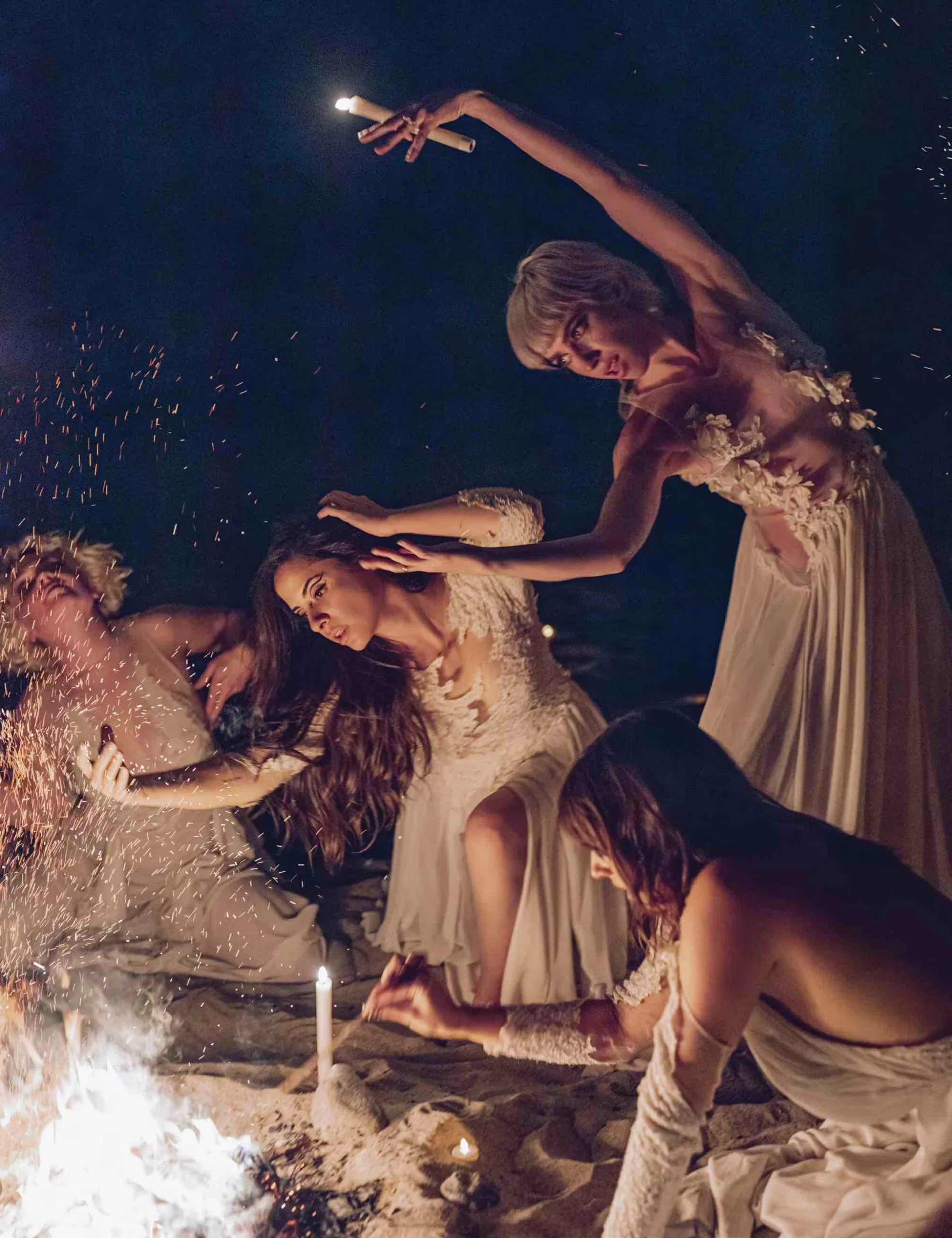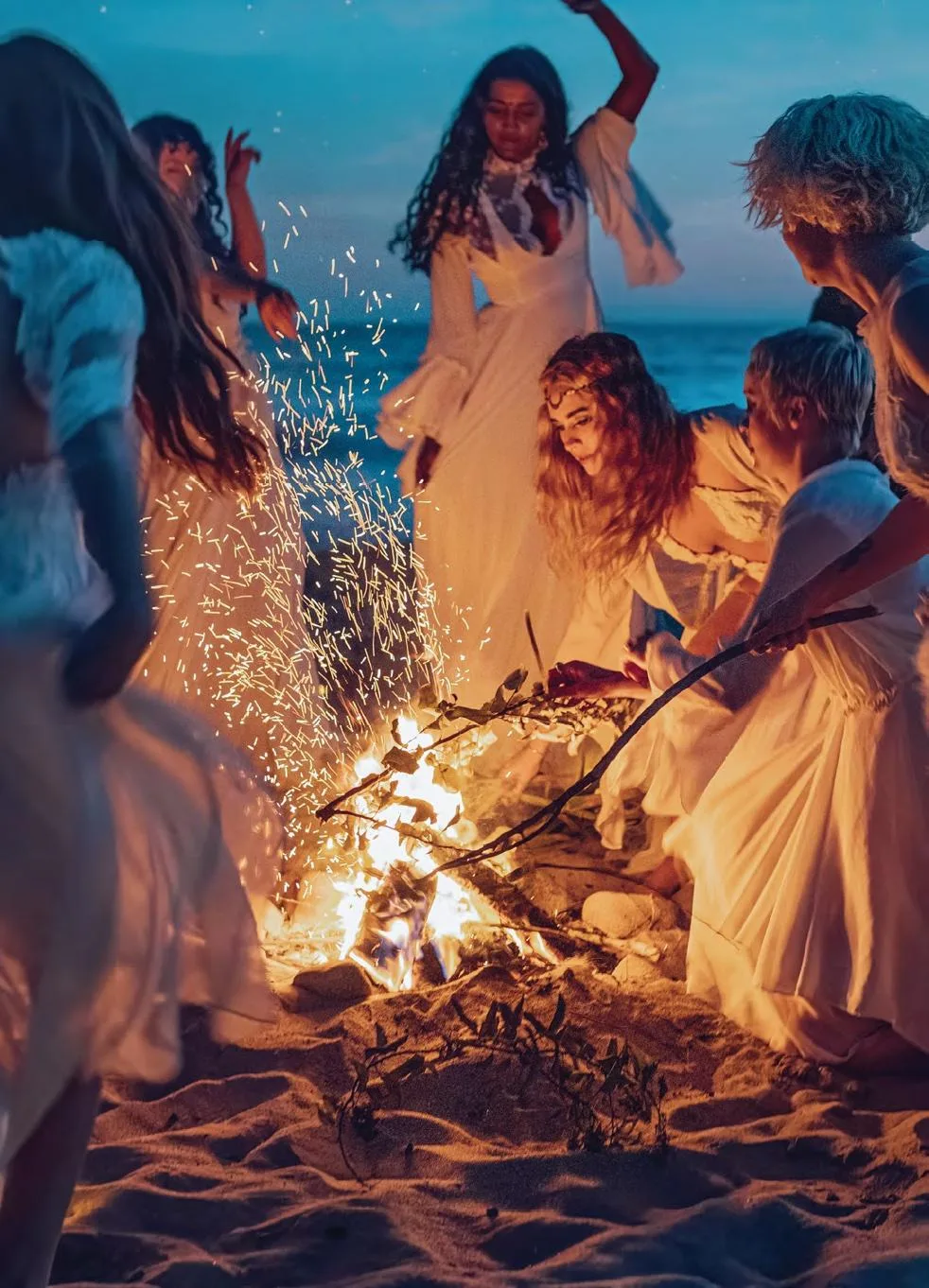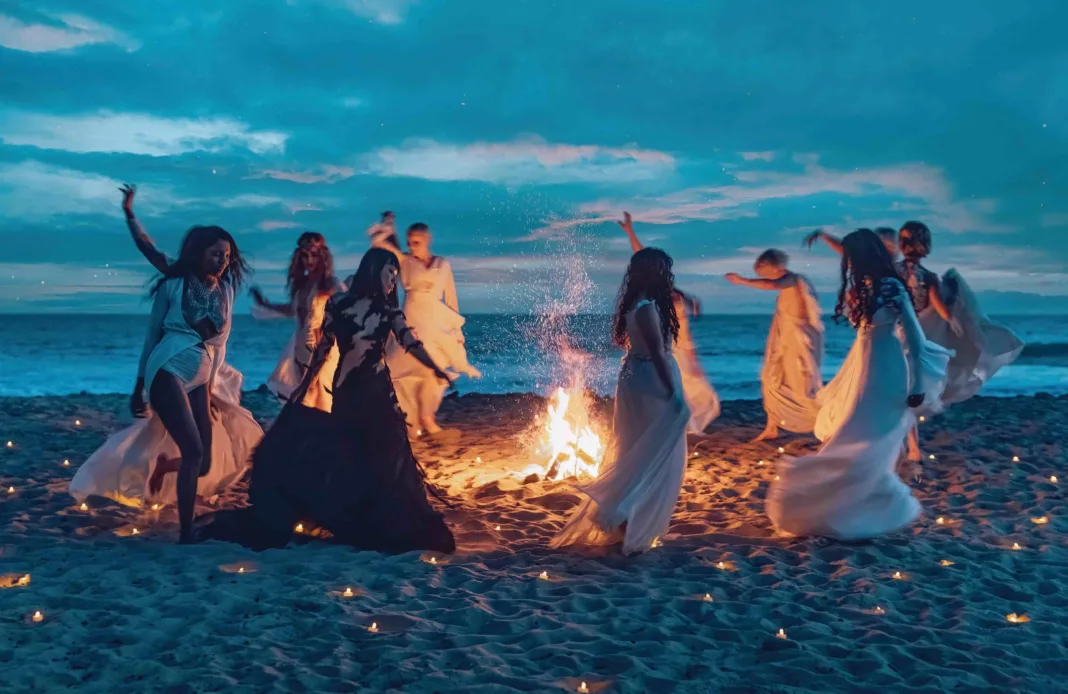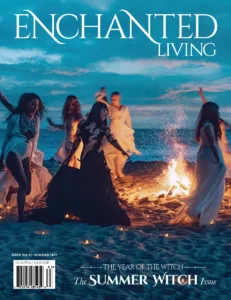Photographer/Creative Director NATASHA WILSON
Photographer/Creative Director: Natasha Wilson @natashawilson.co
Models: Seema Hari @seemahari Sonaz Izadi @sonazizadi Asy Saavedra @asysaavedra Chloe Saavedra @chloesaavedra Maia Saavedra @maiasaavedra_photo Angel Lin @angelmydarling Four @4likefour
Caris Kuhn @rakuhnn Mack @mackandgold Morgan Roberts @really.not.sure Jetta Juriansz @shmetta Michelle Hebért @michellehebertofficial
Gowns: Michelle Hebért @michellehebertofficial
It begins in places of shadow, in woods and on the east sides of mountains, the far side of the beach’s sand: The air is getting softer, velvetier. The hard white light of afternoon is relaxing into gold, and darkness is starting to assert itself in a tapestry of pink and teal and Prussian blue, spangled with stars, lit again by the mirror of the moon—and then by elemental fire, a wheel of it, a blaze, a bank of candles.
This is Midsummer’s Eve. And you’re probably dancing by now.
Maybe you’ve already been dancing all day, skipping as you weave long ribbons and flower garlands around the tallest tree or wooden pole within reach. But now it’s time to let go of the ribbons, gather your magic into both hands, let it make its bright way into the night. Tonight even the kindliest witch has a wild heart. So take off the apron; let down your hair. Your sisters are waiting.
The quick night falls amid the northern hemisphere’s longest days of the year. In the third week of June, as medieval poets described it, the jewel of the sun rests overhead and beams down on Earth.
We expect to go a bit mad in the sun—drunk with light. But Midsummer’s Eve, the shortest night, is even more intoxicating than the longest day, because witches thrive on imbalance. What throws ordinary mortals off kilter, confuses them, makes them lose sleep—all this only increases a witch’s power and sense of possibility. Forget the equinoxes, so tidily divided between light and dark; the imbalance of solstice gives us something we can really work with. And with so little darkness around, its magic is concentrated, palpable to any with the gift to recognize it.
So let’s dance till we’re giddy, and then dance even wilder. Share light within our circle of kindred spirits. Pluck a bride on her way to her wedding and make her dance till she forgets she ever felt any other arms around her. Conjure flames from the ground and use them for curing—or cursing, if we need to. We’ll fan the bonfire’s flames with our skirts; we’ll sing of the old gods and goddesses, and roar at mortals’ acts of daring. This is a night of courage and conjuring, summoning the power deepest within us and using it to call down the stars. In the hour of the witch, in the night of the Fire is transformative, and taming it is one of the witch’s first tasks. If it leaps beyond her control, it will gobble everything in its path. But in her wise-woman hands, it can burn off useless dead growth. She can rise from the ashes stronger than ever.
It is fitting that elemental fire has been a part of Midsummer at least since Celtic times, as if some canny celebrants wish to prolong the light, and enlightenment, even further. Or as if some are afraid of the brief night’s intense power.
If you are a practicing pagan, your solstice celebration, Litha, has its origins in the battle between the Oak King’s light and the Holly King’s darkness. Tradition might have you jumping over or through flames for good luck, or rolling a wheel of fire down a hillside. But you could take a quieter contemporary approach and find a spot for meditation, then join a spirit gathering. Hold a handfasting ceremony: In the pagan calendar, this is a fortuitous day for plighting your troth. Love is a form of light.
We know the science of solstice, of course. As our Earth travels its elliptical path around the sun, it wobbles and tilts on its axis. So around June 20 or 21, the northern hemisphere receives the sun’s rays at a 90-degree angle. This is the sun’s zenith, its highest and proudest, most powerful point. In Latin, the sol (sun) is at stitium—a standstill—as if it can’t bear to travel on; it must gaze down on the beloved Earth.
Ah, but I’m leaning to poetry again. The simplest fact is these are the longest days and the shortest nights the northern hemisphere experiences all year.
But solstice is not quite the same as Midsummer’s Day—not according to modern recordkeepers. That date is officially June 24, coinciding with the Christian feast of Saint John the Baptist. Officially. This calendar isn’t fooling us. We know that the summer solstice and Saint John’s have deeply entwined roots, just as the winter solstice (December 20) and Christmas are at heart one and the same. As the terms have been used since the 10th century, Midsummer, Saint John’s, and solstice are interchangeable.
If we dig deep into the pre-Christian past, we find only two seasons: summer and winter, the times of warm light and cold darkness. Giving equal space on the calendar to the months in which leaves generally spring up from the earth or fall down into it—that’s just some newfangled imposition of mathematical fairness—perhaps to sidestep the fact that the moments of imbalance are the poles that structure our year.
You cannot bury a witch’s power in the grid of days and weeks that hangs on the wall. Visit Stonehenge and watch the shadows trace out the old solar calendar. They’ll place Midsummer firmly between planting and harvesting.
Growth is one of the deepest mysteries of all.

And speaking of poles, people who dwell above the Arctic Circle may not see nighttime at all when their patch of the Earth has tilted directly beneath the sun. Meanwhile, in Antarctica it’s winter—nothing but night, for days, even weeks. For your next Midsummer, travel to one of those extremes and let yourself fill up with light. Or darkness. It will be an experience like no other.
Lucky is the spellcaster who lives in the tropics, where Midsummer reaches wide to embrace two heavily enchanted moments, usually in May and July. There, the Earth’s wobble makes the sun reach its zenith twice. In this double Midsummer, objects that point straight up cast utterly no shadow. Stand at your tallest then, and you are alone … or you are at one with everything.
In ancient Hawaiian, the term for this interlude was kau ka la i kā lolo, “the sun rests on the brains,” and it was considered a time of immense possibility, when your mana, your power and prestige, surged to join with the universe. Any wish could come true—you could pluck it out of thin air and make it real.
These days, people call the phenomenon Lāhainā Noon, meaning “cruel sun.” But you can always choose to use your mana in benevolence.
Wherever you observe the solstice, Midsummer’s Eve and Day are a potent time for healing. You might spend the night gathering certain herbs, or grinding and burning what you already have, to work a cure during the day. This was the practice in the Middle Ages, when a healer might use solstice powers to cure blighted cattle, for example, or blindness, or melancholy.
One little spell is easy for anyone to work. Bright yellow Saint John’s wort blooms at this time of year and got its name from the belief that harvesting it on his feast day gives the flowers and leaves special potency for treating depression and physical cuts and wounds. You don’t have to ingest it to reap the benefits for your mood. Decorate your home with the yellow blossoms; toss a handful into your fire to bring happiness.
If you crave revelation tonight, take a star bath—lying as close to naked as you dare, letting the starshine soak into your skin. The stars’ wisdom will become yours for the year. Or if you want to make a simple statement of joy, light some sparklers and fireworks. You’ve already sensed that the Fourth of July is a historicized Midsummer. The same goes for the French Bastille Day, July 14. This is the time of year to celebrate overturning the old rule and re-creating the world. By torchlight.
To honor history’s rebels, you might tie a straw manikin to the mast of a raft and set her on fire, then push her out to sea—no, wait, that’s what the hygge-loving Danes do every Saint John’s Eve, as they try symbolically to rid their shores of witches. Or, fine, as they (in a gentler explanation of the tradition) respectfully commemorate the witch burnings of the 1500s and 1600s, when the witches really were given this sort of Viking sacrificial rite. Nowadays, the fires help the hekse fly to Bloksbjerg, Germany, for a grand gathering of their kind.
While the rafts celebrate the marriage of fire and water, neighbors drink beer, eat herring, and sing. Meanwhile, true flesh-and-blood witches stand along the pebbly shores and spit toward the flames to make them flicker. They laugh at anyone who ever thought that burning a doll could chase their magic away. They leap onto ancient dolmens, the stone tables that mark passageways to 5,000-year-old graves, and they remark, Doesn’t the coastline look pretty with so many rafts ablaze?
It’s after midnight. The rafts have sunk or burned themselves out. The townspeople go home, brush their teeth, go to bed, safe from bewitchment for another year. Truly? They don’t know that down on the beach, we are dancing again.

A NOTE FROM COVER PHOTOGRAPHER NATASHA WILSON
Lately I’ve been inspired by movie stills that capture intense moments in the middle of a film. I pulled examples from films like Suspiria and Midsommar to simulate at our bonfire. It was captivating to go back and forth between different emotions with all the women, most of whom were strangers to one another at the start. I directed them over the sound of the waves as the sun set, and then, once it was dark, our friend Mack brought out her guitar. By the end of our gathering, there were definitely new bonds forming.
What I didn’t realize was the impact that these images and videos would have once I shared them. It seemed to ignite a creative burst; I was receiving tons of shares and reposts of my series and attached to them were powerful, elevating words. As women around the world face a pivotal moment in history, I am grateful that these images can play a small but influential role in bringing women together, embracing community and vulnerability.






























 Enchanted Living is a quarterly print magazine that celebrates all things enchanted.
Enchanted Living is a quarterly print magazine that celebrates all things enchanted. 



